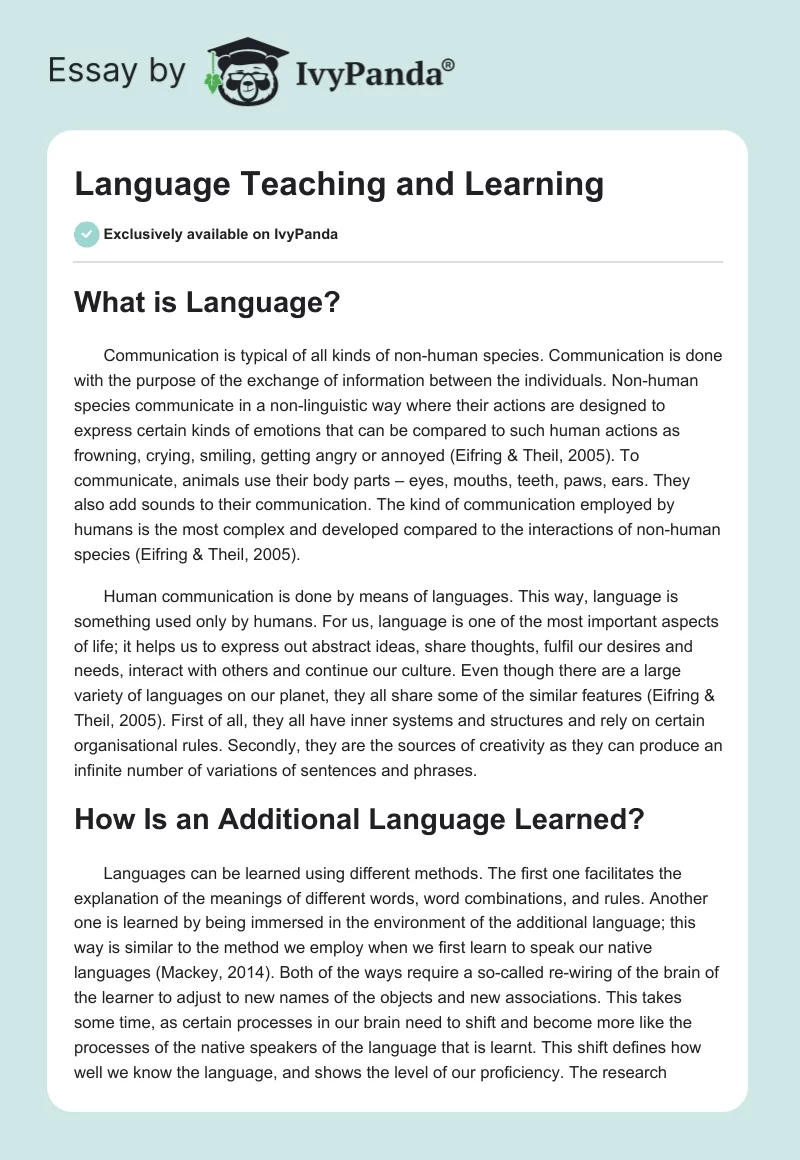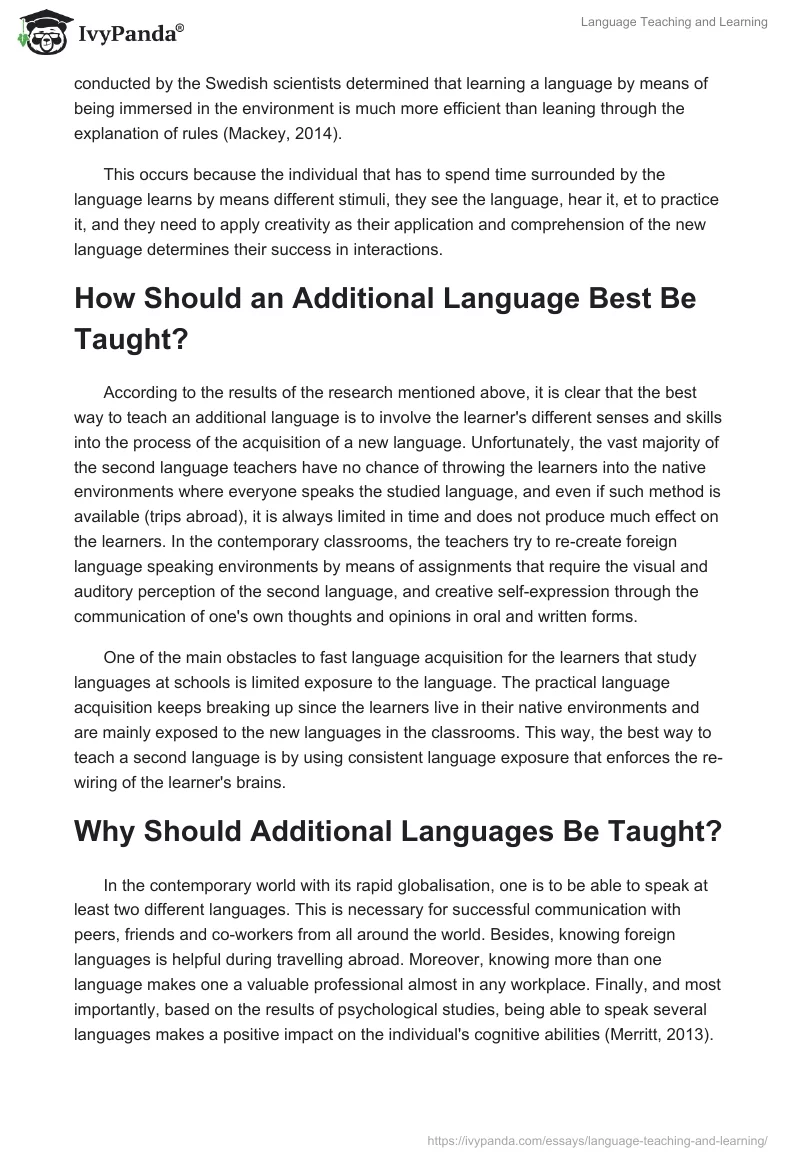What is Language?
Communication is typical of all kinds of non-human species. Communication is done with the purpose of the exchange of information between the individuals. Non-human species communicate in a non-linguistic way where their actions are designed to express certain kinds of emotions that can be compared to such human actions as frowning, crying, smiling, getting angry or annoyed (Eifring & Theil, 2005). To communicate, animals use their body parts – eyes, mouths, teeth, paws, ears. They also add sounds to their communication. The kind of communication employed by humans is the most complex and developed compared to the interactions of non-human species (Eifring & Theil, 2005).
Human communication is done by means of languages. This way, language is something used only by humans. For us, language is one of the most important aspects of life; it helps us to express out abstract ideas, share thoughts, fulfil our desires and needs, interact with others and continue our culture. Even though there are a large variety of languages on our planet, they all share some of the similar features (Eifring & Theil, 2005). First of all, they all have inner systems and structures and rely on certain organisational rules. Secondly, they are the sources of creativity as they can produce an infinite number of variations of sentences and phrases.
How Is an Additional Language Learned?
Languages can be learned using different methods. The first one facilitates the explanation of the meanings of different words, word combinations, and rules. Another one is learned by being immersed in the environment of the additional language; this way is similar to the method we employ when we first learn to speak our native languages (Mackey, 2014). Both of the ways require a so-called re-wiring of the brain of the learner to adjust to new names of the objects and new associations. This takes some time, as certain processes in our brain need to shift and become more like the processes of the native speakers of the language that is learnt. This shift defines how well we know the language, and shows the level of our proficiency. The research conducted by the Swedish scientists determined that learning a language by means of being immersed in the environment is much more efficient than leaning through the explanation of rules (Mackey, 2014).
This occurs because the individual that has to spend time surrounded by the language learns by means different stimuli, they see the language, hear it, et to practice it, and they need to apply creativity as their application and comprehension of the new language determines their success in interactions.
How Should an Additional Language Best Be Taught?
According to the results of the research mentioned above, it is clear that the best way to teach an additional language is to involve the learner’s different senses and skills into the process of the acquisition of a new language. Unfortunately, the vast majority of the second language teachers have no chance of throwing the learners into the native environments where everyone speaks the studied language, and even if such method is available (trips abroad), it is always limited in time and does not produce much effect on the learners. In the contemporary classrooms, the teachers try to re-create foreign language speaking environments by means of assignments that require the visual and auditory perception of the second language, and creative self-expression through the communication of one’s own thoughts and opinions in oral and written forms.
One of the main obstacles to fast language acquisition for the learners that study languages at schools is limited exposure to the language. The practical language acquisition keeps breaking up since the learners live in their native environments and are mainly exposed to the new languages in the classrooms. This way, the best way to teach a second language is by using consistent language exposure that enforces the re-wiring of the learner’s brains.
Why Should Additional Languages Be Taught?
In the contemporary world with its rapid globalisation, one is to be able to speak at least two different languages. This is necessary for successful communication with peers, friends and co-workers from all around the world. Besides, knowing foreign languages is helpful during travelling abroad. Moreover, knowing more than one language makes one a valuable professional almost in any workplace. Finally, and most importantly, based on the results of psychological studies, being able to speak several languages makes a positive impact on the individual’s cognitive abilities (Merritt, 2013).
The scholars confirm that learning additional languages improves the students’ memory, facilitates multitasking, decision making and observation (Merritt, 2013). Besides, learning new languages improves one’s knowledge of their native language because it develops a better understanding of language mechanisms and systems. This way, teaching foreign languages has a variety of reasons and uses. Teaching foreign languages as a part of the curriculum is not only useful for the students’ future careers but also makes them better and more skilful learners. This is why it is widely encouraged and recommended that children start acquiring new languages since childhood as this makes a positive impact on their future adult life and reduces the number of potential challenges.
Reference List
Eifring, H. & Theil, R. (2005). Linguistics for Students of Asian and African Languages. Web.
Mackey, A. (2014). What happens in the brain when you learn a language? Web.
Merritt, A. (2013). Why learn a foreign language? Benefits of bilingualism. Web.


